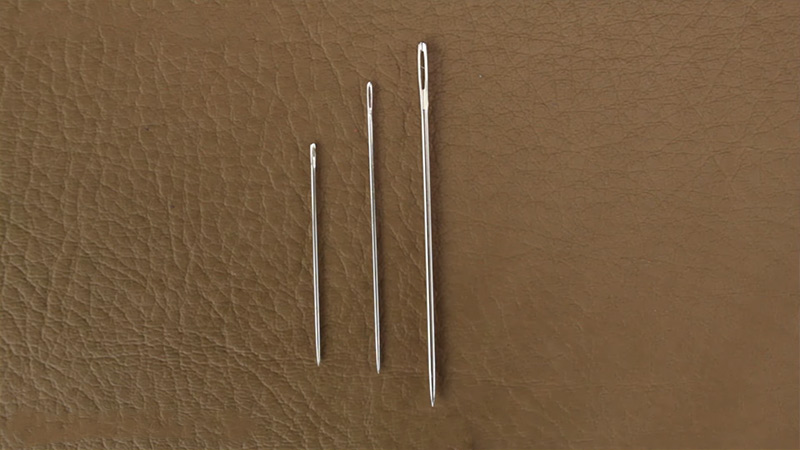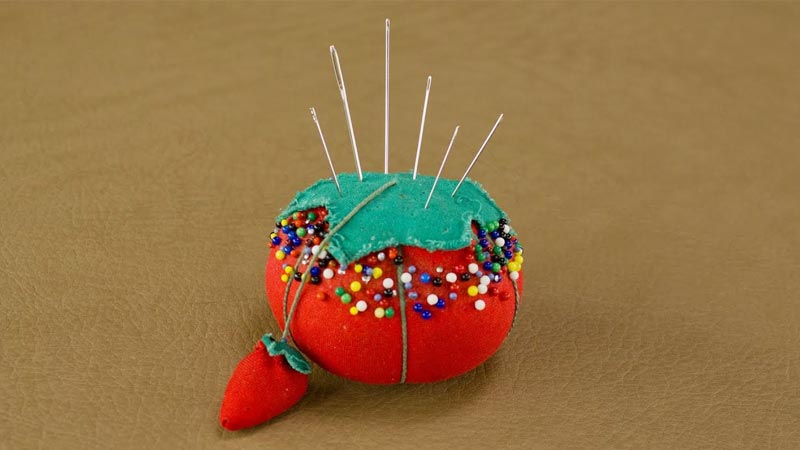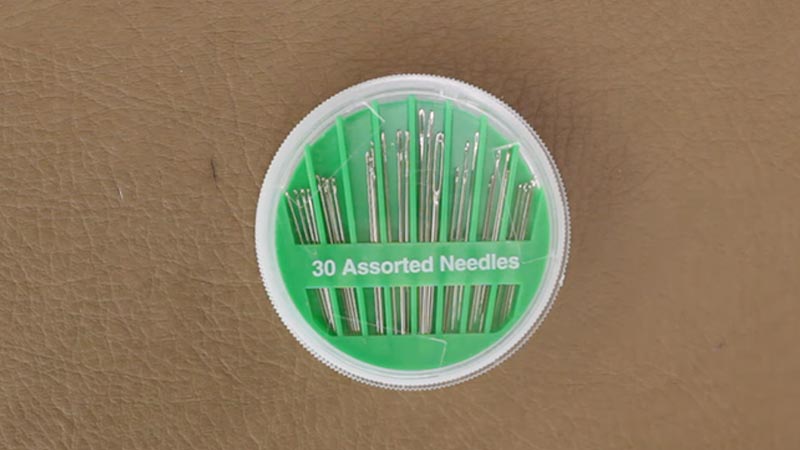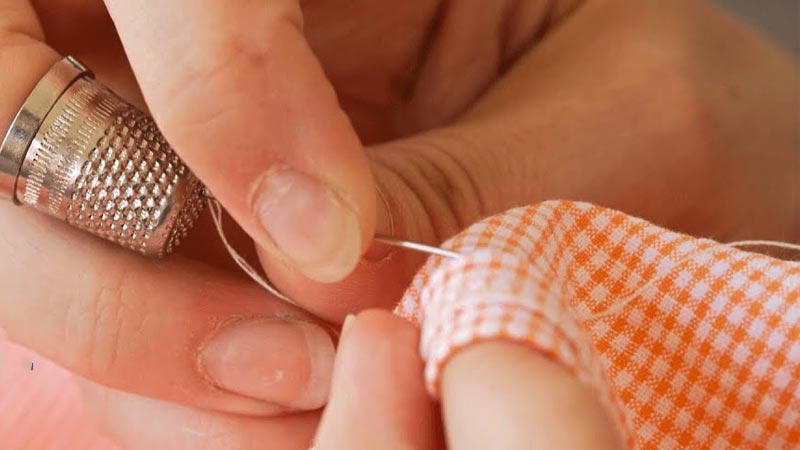Hand-sewing needles, the unassuming heroes of the sewing world, are often overlooked, but their importance cannot be overstated.
These slender, versatile tools possess a deceptively simple design, yet they play a pivotal role in the creation, repair, and transformation of fabric.
With a sharp, precision-crafted tip at one end and an eye for thread at the other, they empower crafters and seamstresses to bring their creative visions to life.
Each needle type is tailored for specific tasks and fabric types, from delicate silk embroidery to heavy-duty leatherwork.
In this exploration, we delve into the anatomy, types, and myriad uses of hand-sewing needles, revealing their indispensable role in the art of sewing and craftsmanship.

What Is Hand Sewing Needles?
Hand sewing needles are slender, pointed tools typically made of metal, featuring an eye at one end and a sharp tip at the other.
These versatile instruments are used in hand sewing for various purposes, such as mending, hemming, and creating decorative stitches.
Hand-sewing needles come in different types, each tailored to specific tasks and materials. For instance, sharps are general-purpose needles, while embroidery needles are designed for decorative stitching.
The choice of needle depends on the fabric type, project requirements, and personal preference. Properly cared for and organized, hand-sewing needles are essential tools for any sewing enthusiast and are found in most sewing kits.
What Are the Key Components in the Anatomy of a Hand Sewing Needle?

The anatomy of a hand-sewing needle consists of several essential components, each serving a specific purpose in the sewing process.
These key components include:
Tip (Point)
The tip, also known as the point, is the sharp, tapered end of the needle. It is responsible for piercing through the fabric, creating a pathway for the needle to pass.
The tip’s sharpness and shape can vary depending on the needle type, with options like fine points for delicate fabrics and ballpoints for knit fabrics to prevent snags.
Shaft
The shaft is the elongated, slender body of the needle, extending from the tip to the opposite end. It facilitates the needle’s passage through the fabric. The thickness and length of the shaft may vary among different needle types, depending on the intended use.
Eye
The eye is a small hole located at the end of the needle opposite the tip. It is where the thread is inserted, forming a loop that allows the needle to pull the thread through the fabric.
The size of the eye varies based on the needle type and is chosen to accommodate the thickness of the thread used in the sewing project.
Groove (optional)
Some hand-sewing needles, particularly those designed for embroidery or metallic threads, may feature a groove near the eye. This groove helps guide the thread as it passes through the eye, reducing the risk of tangling and thread breakage during stitching.
Length
The overall length of the needle can vary depending on the type and intended use. Longer needles are often used in embroidery or quilting to accommodate multiple layers of fabric and batting.
Shorter needles, like betweens, are designed for finer, more detailed work in tight spaces.
What Are the Different Types of Hand Sewing Needles?

Hand-sewing needles come in various types, each uniquely designed to serve specific sewing tasks and fabric types. Choosing the right type of hand-sewing needle is crucial for achieving the best results in your sewing projects.
Here are some of the most common types of hand-sewing needles:
Sharps
Sharps are general-purpose needles with a medium length and a round eye. They are suitable for sewing most lightweight to medium-weight fabrics, such as cotton, linen, and silk. They are versatile and commonly used for everyday sewing.
Betweens
Betweens, also known as quilting needles, are short and fine needles with a small eye. They are designed for quilting, as well as for making small, precise stitches in tight spaces. These needles are perfect for hand-quilting projects.
Embroidery
Embroidery needles are long and thin, with a larger eye compared to other needles. They are ideal for decorative stitching techniques such as embroidery, cross-stitch, and appliqué. The larger eye allows for easier threading of embroidery floss and specialty threads.
Tapestry
Tapestry needles have a blunt tip and a larger eye. They are commonly used for stitching on canvas, wool, and other coarse fabrics. These needles are often associated with needlepoint and counted cross-stitch projects.
Chenille
Chenille needles are similar to tapestry needles but feature a sharp tip. They are used for stitching with thick or fuzzy threads, like chenille or wool. Chenille needles can create larger, visible stitches.
Beading
Beading needles are extremely thin, flexible, and have a small eye. They are primarily used for attaching beads, sequins, or other small decorative elements to fabrics. Beading needles are essential for intricate beadwork.
Milliners
Milliners, or straw needles, are long, fine needles with a round eye. They are often used in millinery (hat-making) and for making small, even stitches in delicate fabrics. They are also suitable for ribbon embroidery.
Darning
Darning needles are designed for mending and repairing fabric. They have a large eye and a blunt tip, making it easier to weave the needle through the fabric when darning holes or tears.
Sailmakers
Sailmakers needles are heavy-duty needles used for sewing thick materials, including canvas and leather. They have a triangular point and a round eye, making them well-suited for heavy-duty hand-sewing tasks.
Glover’s
Glover’s needles are specialized needles for leatherwork. They are often used in glove-making and other leathercraft projects. They have a sharp, triangular point and a round eye.
What Is a Hand Sewing Needle Used For?

A hand-sewing needle is a versatile tool used for a wide range of sewing and crafting tasks that require manual stitching. These slender, pointed needles are equipped with an eye at one end for threading and a sharp tip at the other for piercing fabric.
Hand-sewing needles are used for various purposes, including:
Mending
Hand-sewing needles are ideal for repairing tears, holes, and loose seams in clothing, linens, and other fabric items. They allow for precise and nearly invisible repairs.
Hemming
Whether you’re shortening a pair of pants, creating a neat hem on a curtain, or adjusting the length of a skirt, hand-sewing needles are essential for achieving tidy and secure hems.
Embroidery
Hand-sewing needles are fundamental to the art of embroidery, enabling the creation of intricate and decorative stitches on fabric, from fine silk embroidery to bold cross-stitch patterns.
Quilting
Quilters use specialized hand-sewing needles, such as between, for detailed quilting stitches that hold together the layers of a quilt, adding both structure and artistic embellishment.
Fabric Crafts
Hand-sewing needles are crucial for a wide range of fabric crafts, including the assembly of stuffed animals, the creation of fabric ornaments, and various patchwork projects.
Attaching Embellishments
Beading needles are employed for adding beads, sequins, or other small decorative elements to fabric, allowing for intricate and stunning embellished designs.
Darning
Darning needles are used for repairing and reinforcing worn or damaged fabric, often applied to extend the life of socks and other knit items.
Leatherwork
In leathercraft, specialized needles such as Glover’s and sailmaker’s needles are used for sewing leather pieces together, ensuring the strength and durability of leather products.
Canvas Work
Tapestry needles are preferred for canvas work, including needlepoint and counted cross-stitch projects, allowing for precise and artistic stitching on canvas fabric.
General Sewing
Hand-sewing needles are indispensable for everyday sewing tasks, such as sewing on buttons, tacking fabric together temporarily before machine sewing, or making quick repairs.
FAQs
What are some common projects where hand-sewing needles are essential?
Hand-sewing needles are indispensable for mending clothes, hemming, embroidery, quilting, and attaching embellishments. They are also used in leatherwork and various fabric crafts.
How do I choose the right-hand sewing needle for my project?
The choice of the right-hand sewing needle depends on the fabric type and the specific task. Different needle types are designed for different purposes, ensuring optimal results.
Are there any tips for caring for and organizing hand-sewing needles?
Proper needle care includes keeping them clean and rust-free, storing them in a needle case or organizer, and labeling them to easily identify their types.
What are some safety precautions to follow when using hand-sewing needles?
When working with hand-sewing needles, it’s important to be cautious to avoid accidental pricks or injuries. Always keep needles out of reach of children and follow safe sewing practices.
Where can I find hand-sewing needles and purchase them online or in physical stores?
Hand-sewing needles are readily available in craft stores, fabric shops, and online retailers. You can easily find them in sets or individually, depending on your preferences.
To Recap
In the world of crafting and sewing, hand-sewing needles are the unsung heroes that bridge creativity and precision.
These unassuming tools, with their sharp tips and eye for thread, offer an avenue for artisans to mend, create, and embellish with remarkable finesse.
As we conclude our exploration of hand-sewing needles, it becomes evident that these simple instruments are essential for every sewing enthusiast.
Whether you’re delicately stitching embroidery, precisely quilting layers of fabric, or repairing a beloved piece of clothing, the right needle ensures the success of your endeavor.
In their diversity of types and sizes, hand-sewing needles open a world of possibilities, proving that even the smallest tools can make a big difference in the hands of a skilled crafter.
Leave a Reply